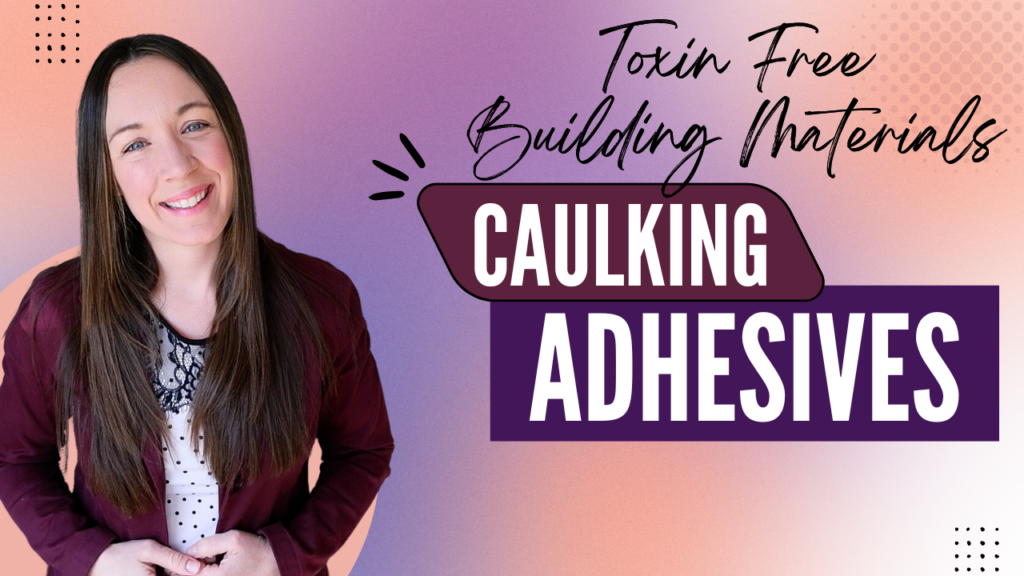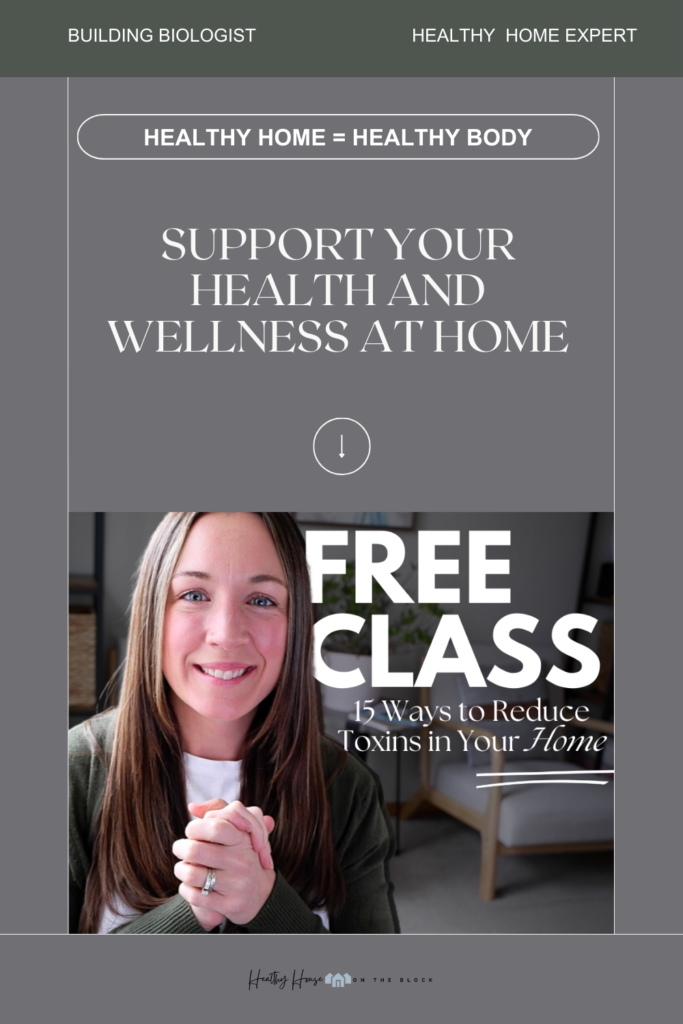
Home projects are just a normal part of homeownership. I mean, isn’t it true that you know you’re a homeowner when you find yourself making a Saturday run to the hardware store, where you’ll stand in front of an aisle of caulking tubes, contemplating which one will work the best? But what if I were to tell you that there are more green building materials now than ever before that you can use instead of bringing any old toxic product into your home.
One of the items I see being used most in home remodels, home projects and renovations is very strong construction adhesives. Caulking is also a commonly used item that is applied in numerous situations. Because this is one of those items that is used so frequently, it’s important to know your options when it comes to green building adhesives and caulks.
When a product is one that is used frequently or in many applications, finding a green building material alternative to the conventional version is key. It’s one of those changes that has to be a conscious decision and has to be decided upon before you go to the store.
But if you’re doing any sort of home project, any sort of renovation, a furniture modification or other project, going with a caulking or adhesive that the standards of a green building material, will prevent you from coming in contact with toxins short term as well as bringing toxins into your home to affect you in the long term.
And in my opinion, it’s one of those really easy swaps in terms of locating the product and cost. If you’re working with a contractor who’s doing work for you, I encourage you to talk to them about using these green building supplies in terms of caulking, adhesive and construction glues. Oten times they just aren’t aware that there are healthier options when it comes to the supplies they’re using.
After all, it’s your home and your project, ultimately, why not make sure that the healthiest materials are being used.
THE PROBLEM WITH CONVENTIONAL ADHESIVES & CAULKS
Let’s be honest, do you (or myself for quite a long time) really know what’s in a tube of caulk or construction adhesive? Probably not. Why would you? Often we just grab whatever has been recommended to us or what has worked in the past when we’re at the hardware store shopping for materials to use on a project.
But really, there are a few problems with conventional adhesives, caulks and glue. These products contain toxins that we come into contact with during use as well as bring into our home, where they off-gas for the entire life of the product.
Specifically, a few key ingredients are big offenders when it comes to the components of caulks, adhesives and glues:
Silica: This filler that is added to caulk and adhesive products has problems with both long term and short term use. First, when used it can cause irritation to the eyes and nose. Long term, it can lead to increased risk of cancer when long exposures occur.
Talc: Talc is a filler that is often used in butyl caulks and polyurethane products. The reason talc is to be avoided is it often contains asbestos. There have even been numerous cases where products labeled “asbestos free” do actually contain asbestos due to the talc that is added during production.
Phthalates: Often found in acrylic caulking, phthalates are a plasticizer that disrupts our endocrine system and causes problems with hormone production. (My deep dive post, What are Phthalates covers everything you need to know about this toxin)
Formaldehyde: Formaldehyde is used in many adhesives and glues used in construction and building materials. It is a solvent that allows for a very strong application. However, formaldehyde is a known carcinogen, and it’s a VOC that never stops off-gassing. Formaldehyde is a serious toxin that is EXTREMELY prevalent in our homes from furniture, building materials and fabrics. Anywhere we can cut this toxin out will allow our bodies to become less burdened and begin to heal.

Styrene: This toxin is often found in acrylic caulking (as well as other areas of your home like insulation, carpet and piping). Short term effects of styrene while using acrylic caulking is respiratory irritation as well as skin irritation. Long term exposure from the product in large amounts can lead to central nervous system damage, kidney damage as well as an increased risk of cancer (INFORMATION)
Biocides: Anything that is added to prevent mold and mildew is a biocide and can initially cause an allergic response. This looks like irritation to the nasal and breathing passages and even the skin. Long term it has been linked to an increased risk of cancer as well as long term respiratory tract issues. (STUDY)
BPA: BPA, or bisphenol A, which I recently did a post on, is a hormone disruptor that works against our endocrine system. Most of us currently have this toxin within our bodies, even though it is quickly metabolized and removed naturally. This tells us that we come into contact with BPA constantly, and therefore anywhere it can be removed from our daily routines and living, the better.
Ethylene Glycol: This toxin is present in adhesives and is a VOC that continues to off-gas for long periods of time. This toxin has been linked to kidney toxicity and deceased normal function. It can also affect the nervous system negatively as well as cause long term issues with the lung and respiratory system. (INFORMATION)
Isocyanates: This is often found in products using polyurethane and will off-gas as it cures. This is a known carcinogen and has been linked to cancer in various studies.

GREEN BUILDING ADHESIVES
ECOS Wood Glue: Perfect for furniture projects, flooring projects or any other wood surfaces that need to be adhered. It’s completely non-toxic and zero-VOC.
AFM Caulk: Contains no formaldehyde and does not release any solvents or odors. Good for replacing oil caulk and putty.
Rescue Bond Sealant & Adhesive: Sort of an all-in one caulking solution for quick repairs. Good to keep in the house for when you need to do maintenance. The formula is free from all VOCs, phthalates, and is odor free. Use in exterior and interior applications.
SikaFlex 715: Good for interior caulking applications. It is crack resistant and becomes very flexible. Use where you need an interior sealant application. It also has extremely low VOCs.
AFM Almighty Adhesive: Exceeds VOC and environmental regulations in the US (even California). No off-gassing and no odor present as it’s drying and it cures quickly. Good for construction projects that involve wood, drywall or concrete.
AFM 3 in 1 Adhesive: Use this anyplace a typical construction adhesive would be used. It’s low odor, water based and formaldehyde free. Mostly used on flooring that requires adhesive.
Chemlink DuraLink 35 for Windows, Doors & Siding: This sealant is extremely elastic and moisture-cured for places that require a little movement (think windows, doors, and siding). It has a fast drying time and is paintable within 24 hours. You can even apply this in temperatures as low as 32 degrees, so it’s perfect for exterior application too.
ChemLink Build secure Multi-Purpose Construction Adhesive: This adhesive is very versatile and can be used to adhere wood, concrete, sheetrock, metal, tile and masonry — even engineered plastics. It doesn’t shrink and is non-flammable and non-toxic and solvent free.

APPLICATIONS FOR ADHESIVES & CAULKING
Maintenance in bathrooms and kitchens: This is one thing I see all the time that gets let go in homes and it’s such an easy repair to do. It will keep moisture from going places you don’t want it will help keep drywall and other areas dry to prevent future issues.
Sealing window frames and door frames in older homes: Every now and then we need to do some maintenance around window frames and door frames as our homes settle or as weather elements age the current adhesive or caulking. Keeping up on this will keep moisture and insects out of your home, plus make it more energy efficient.
Repairs to cabinets and furniture: Making sure you’re using a good product for repairs will ensure you don’t have to repair the item over and over again. Plus, having a toxin free caulking or green building adhesive on hand will ensure you’re not introducing chemicals to your home.
New Projects and DIYs: I like to plan out my projects and DIYs and specifically choose products that don’t have VOCs or chemicals in them while i”m in that planning process. I like to have green building adhesives and caulks stored inside in air tight containers so I don’t have to get new products all the time.
Filling in foundation and masonry cracks: If you have a basement like most homes in the Midwest, you’ll want to watch the foundation for cracks that develop over time. It’s a natural part of settling and it can turn into a huge, costly project if it’s not taken care of as it happens. Keep an adhesive or caulk that is green building friendly around and you can fill in whenever you need.

My best advice is to keep one of these non toxic, green building adhesives and caulks on hand. You’ll avoid that Saturday morning run to the hardware store and more importantly, avoid bringing unnecessary toxins into your home and space.
Share this:
- Click to share on Facebook (Opens in new window) Facebook
- Click to share on LinkedIn (Opens in new window) LinkedIn
- Click to share on Reddit (Opens in new window) Reddit
- Click to share on Pinterest (Opens in new window) Pinterest
- Click to print (Opens in new window) Print
- Click to share on X (Opens in new window) X



